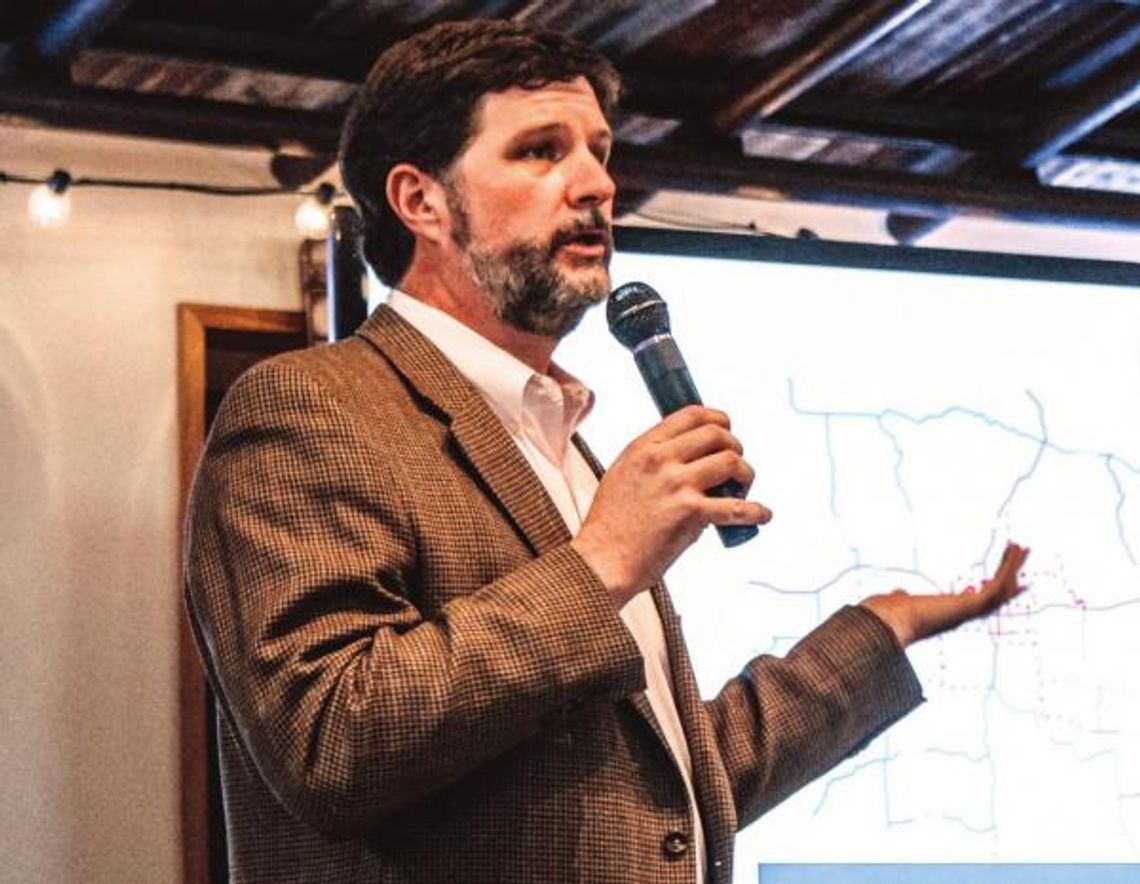Howard Koontz, planning director for the city of Dripping Springs, gave a presentation on the “State of the City” to local business owners last week.
The presentation took place at the Dripping Springs Chamber of Commerce’s monthly luncheon on Wednesday, Jan. 26. Koontz reviewed last year’s goings-on and gave a brief glimpse of what residents can expect for this year, largely focusing on planning and development, finances and employment. In doing so, Koontz also covered a few hot-button topics, such as the city’s ongoing development moratorium, its finalized transportation master plan and its contested wastewate permit.
Dripping Springs played a significant part in Hays County’s growth last year, which saw an impressive 53% increase from 2010– 2020, said Koontz. Nine hundred and eight new single-family residential permits were granted by the city, and multiple large residential and mixed-use developments were approved, including Anarene (Double L Ranch) and Wild Ridge.
“908 new houses in 2021 — we’re proud of that,” Koontz said. “And what follows rooftops? Retail follows rooftops.”
Over a dozen new businesses came to Drippin Springs in 2021. This year, those businesses will be joined by about a dozen more — with popular chains such as P. Terry’s, Panda Express, Freebirds, SportClips and Popeyes coming into the area.
Such swift growth posed — and will continue to pos — some challenges for the city, which responded with a Temporary Development Moratorium in mid-November.
“The moratorium is a pause for us to get a handle on two things: land use and public wastewater,” Koontz said. “We need to make sure that, as a city, we’re providing adequate public facilities for our residents.”
The city may still extend its moratorium, which will otherwise end on Feb. 20.
In the meantime, Koontz said, the city has begun to consider its comprehensive plan, taking a look at city operations. The city will soon begin a process of public meetings to discuss the plan, with a code rewrit tentatively scheduled to be finished by Dec. 31.
Additional city projects discussed included an improvement project for Old Fitzhugh Rd and a landscape ordinance. The latter would provide a tree plan for Dripping Springs that “focuses on conservation” and “keeps Dripping Springs looking like Dripping Springs,” according to Koontz.
As for transportation, “The city finalized the Transportation Master Plan with an overview of the planned thoroughfares as a group effort between the state, the county and the city,” he said. Moving forward, much of the city’s focus will fall on its foot traffic, with plans for sidewalk improvements on Rob Shelton Blvd. and Mercer St.
Koontz then addressed the proverbial elephant in the planning and development department: Dripping Springs’ wastewater issue and the litigation the city has undertaken to expand its capacity.
“The litigation revolves around our ability to expand wastewater service in the city and regionally,” Koontz said. “The short story is that, years ago, we were authorized to expand our wastewater capabilities, and there was an opposition group in Austin that did not appreciate [the Texas Commission on Environmental Quality] granting Dripping Springs the authorization to expand our ability to treat wastewater. There was an injunction placed on the TCEQ for them to allow us to move forward, and that became a court case in Travis County.”
“A Travis judge sided with the opposition, and we appealed it,” he continued. “Then, COVID-19 hit, and it got delayed. Through some load-balancing amongst courts throughout the state, the venue was changed from Travis County to El Paso. We will probably participate by television screen or Zoom meeting, but what we’re hopeful for is that the appellant judge finds that the issuance of the permit was done well and is good for the city, and we’ll be able to move forward.”
With so many ongoing initiatives, the city created 10 new positions over the past year, bringing its total number of regular employees to 44, its number of seasonal employees to 25 and its volunteers to 100, not including the mayor or city council.
Still, the city’s expenditures remain $2 million less than its revenue, with sales tax collections going up across the board, quarter after quarter, said Koontz.
.png)












